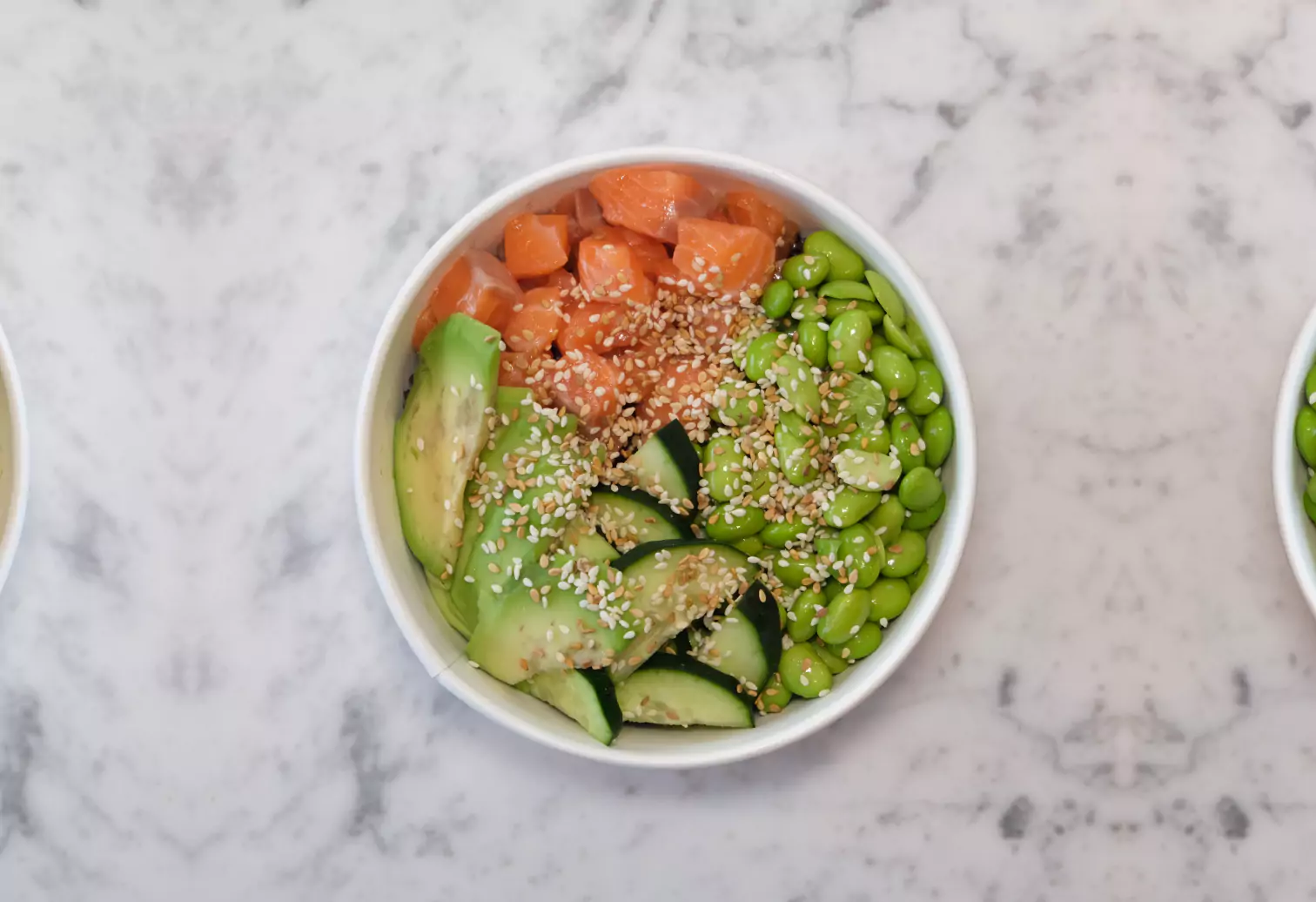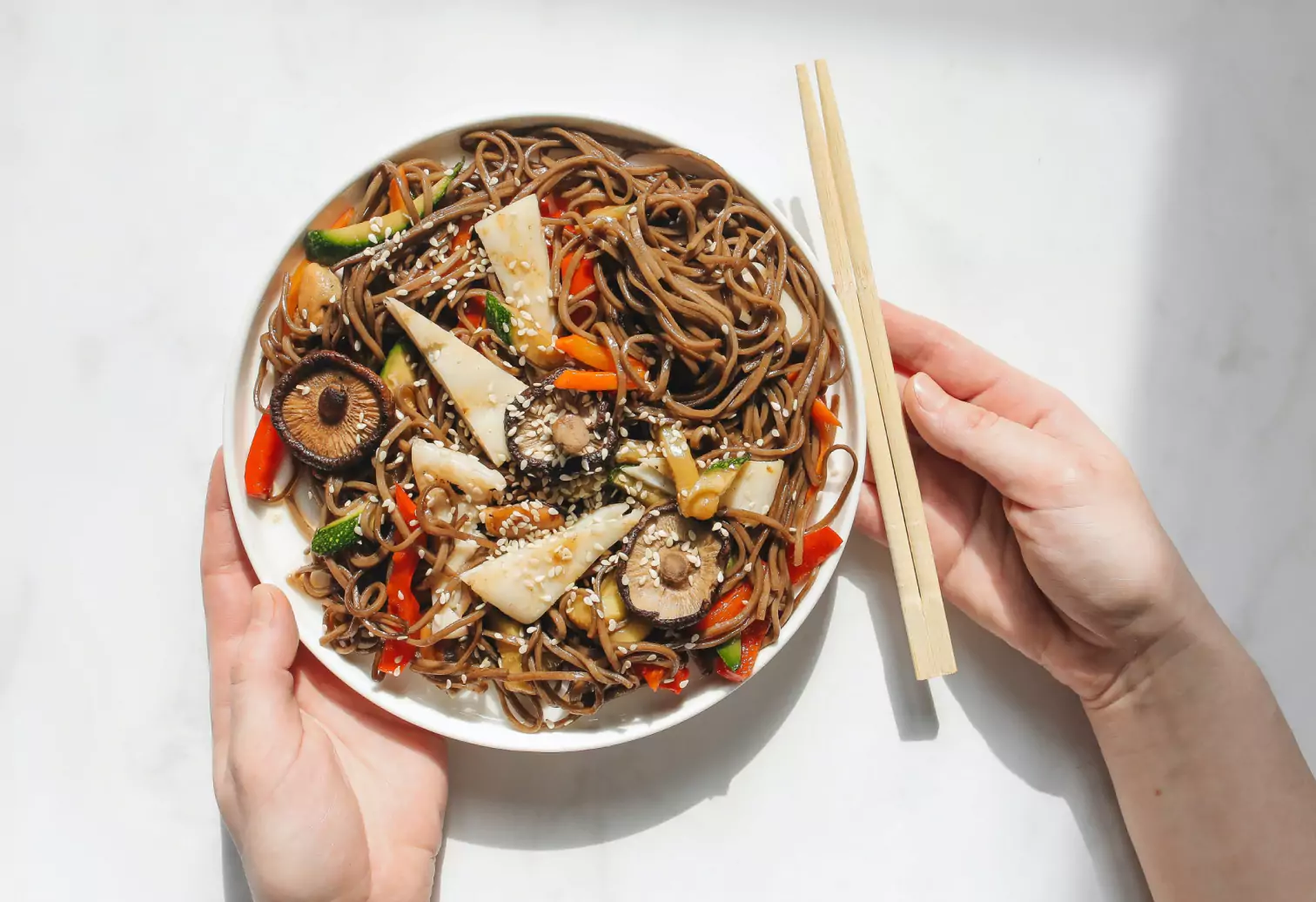How Often You Should Eat If You Have Diabetes

Key Takeways
Meal frequency is a popular topic of debate in the health and wellness field right now. And intermittent fasting (IF) is quickly becoming a buzzword for weight loss, managing weight, improving insulin sensitivity, controlling blood glucose, and reducing the risk of developing chronic conditions. In a nutshell: when we eat may be just as important as what we eat.
This idea is even more important for people who already have signs of insulin resistance, such as those with type 2 diabetes or prediabetes.
But there are no one-size-fits-all diabetes diet plans, so it's not surprising that recommendations for how often to eat are also still wide-ranging. Some health professionals suggest eating small, frequent meals four to six times a day. In contrast, others suggest larger, limited meals two to three times a day. It can be challenging to think about meal timing and what to eat, but we're here to help. Here are some tips and tricks to help you learn more.
How Diabetes and Prediabetes Impacts How Often You Should Eat

Most people need to maintain a somewhat consistent eating schedule to curb hunger cravings and keep energy levels up. And people with diabetes should be even more vigilant about this. Long intervals between meals can lead to potentially dangerous low blood sugar levels. Having one overly large meal on an empty stomach can cause a spike in blood sugar levels.
There’s no one ‘perfect’ meal plan or schedule for people with blood sugar issues, and there will be some variations from person to person. Working with your healthcare providers and monitoring your blood sugar responses with the help of a registered dietitian can help you learn what works best for you.
Your diabetes medication management is also going to affect this. Some medications, like Metformin, are generally best when taken with food, and being on insulin requires some additional considerations. Typically, insulin needs to be dosed based on the carbohydrate amount in your meals, but talk with your diabetes management team if you have questions.
Best Way to Space Out Eating if You Have Diabetes

The standard recommendation of three healthy meals and two snacks for people with diabetes has been around for some time. But we’re finding that this may not necessarily be the best advice for everyone.
One study compared two larger meals with six smaller meals for people with type 2 diabetes. It found that two larger meals reduced body weight and fasting blood sugar than six small meals a day, even when daily calories were the same.
Intermittent fasting may also have some benefits for blood sugar control. A 2019 study compared intermittent fasting with a nine-hour eating window compared to no time restrictions on eating in men with type 2 diabetes. They found that fasting improved blood sugar values after meals.
Putting a balanced diet together can be one of the most challenging parts of diabetes care. What’s the right amount of carbohydrates? Should you add dairy products, brown rice, saturated fat? What fruits and food groups are part of the best eating plan? And most challenging of all—when should you eat any of it?
When it comes to food choices, it’s best to consult a registered dietitian who will help create the perfect diabetes meal plan for your individual needs. Here's a sample diet plan to help make it easier to figure out when to eat the healthy foods you decide to add to your diet.
Breakfast

That same study we mentioned above also compared an earlier eating window of 8 a.m. to 5 p.m. with a later eating window of 12 p.m. to 9 p.m. They found that while both schedules helped control blood sugar levels after meals, only the earlier timeframe improved fasting blood sugar.
The reason behind this is likely linked to our natural circadian rhythm. Time of day affects insulin secretion and insulin sensitivity, so front-loading more of your food earlier in the day can be helpful. To maximize the benefits of intermittent fasting, consider an earlier eating window where you get most of your calories during breakfast and lunch while also fitting in an earlier dinner.
One bonus tip for breakfast—try not to break your overnight fast with a meal that includes only carbs. You're more sensitive to carbs on an empty stomach. So starting your day with a balanced meal of protein and healthy fats and then eating carbs is a good idea for most people. Consider foods like eggs, avocado, and berries.
Lunch

Don’t discount the power of a healthy lunch to get you through the day! While it can be commonplace to skip lunch to cut calories or just because you’re too busy to eat, lunch is a pretty important meal.
For people with diabetes, in particular, going too long between meals can lead to a potentially dangerous drop in blood glucose levels. When you have a drop like that, your body typically goes into overdrive to compensate. It pumps out glucose (sugar) from storage to help bring your blood sugar levels back to normal. It can lead to feeling like we’re “riding the blood sugar roller coaster” where it’s challenging to get your sugars to level out.
It can also be common to overeat at dinner if you skip lunch. When you’re busy (at work, for example), you suppress internal hunger cues and don’t realize how hungry you are. Once you slow down at the end of the day, the neglected hunger comes on with a vengeance and can cause overeating at dinner.
It can also lead to the urge to snack on unhealthy foods. It can then lead to weight gain and put you at risk of heart disease, high blood pressure, blood sugar level spikes, and higher fasting values the following day.
Planning your lunch ahead of time can help to avoid this. One quick, easy lunch idea is to prep a protein box of hard-boiled eggs or shredded chicken, nuts, berries, and whatever chopped veggies you like.
Snacks

For many, limiting snacks between meals can help to combat insulin resistance. Every time you eat, your ‘eating hormones’ are stimulated. When you give your body a break between meals, you allow your body to ‘re-set.’
You may see some benefits to glucose control by focusing on filling meals with adequate fiber, protein, and healthy fats to avoid needing snacks between meals. If you need to snack between meals, choose snacks with a combination of protein and fiber, like apple and cheese, hummus and veggies, or unsweetened yogurt and berries.
This will vary based on your medications and individual responses, though. Those on insulin will need to discuss this with their diabetes management team to ensure insulin dosage matches carb intake.
Some people with blood sugar control issues may also need snacks to prevent low blood sugars between meals. Again, discuss this with your primary provider to determine what’s best for you.
Dinner

As mentioned above, some studies suggest that an earlier eating window can help to improve insulin sensitivity and optimize fasting blood sugar. To get the most value out of this, consider aiming for an earlier eating window, such as 8 a.m. to 5 p.m.
From our data at Nutrisense, most people do best when eating their last bite of food at least 3 hours before bed.. If you typically eat much later than this, consider moving your eating window up even 30 minutes at a time to work towards better blood sugar control.
Since insulin sensitivity is lower in the evenings, one helpful strategy is to keep your dinner on the lower-carb side and focus on a meal with protein, non-starchy veggies, and healthy fats. Consider something like a salmon filet topping a bed of spinach, tomatoes, green beans, or other veggies! Another idea is a quick veggie stir fry with peppers, onions, cabbage, asparagus, and thinly sliced beef.
Other Healthy Eating Tips for People with Diabetes
Paying attention to when you’re eating isn’t the only strategy to keep in mind to improve your blood sugar levels. Here are some more ideas to improve your blood sugar response:
1) Regulate Your Carbohydrates

Since the body breaks carbs down into energy relatively quickly, more carbs mean higher blood sugar levels or a blood sugar spike. Being thoughtful about how many carbs you include in a meal and the types of carbs makes a big difference in your blood sugar levels.
How many carbs someone with diabetes or prediabetes should eat is still up for debate. Recent research suggests that this recommendation likely needs to be individualized from person to person for best results. Monitoring your blood sugar response to different meals using a continuous glucose monitor (CGM) and working with a registered dietitian can help you pinpoint the right amount of carbs for you.
In general, choosing whole food carbs like whole grains, fruit, or starches (starchy vegetables like sweet potatoes, beans, corn, etc.) will lead to better blood sugar values compared to more refined options like processed cereal, white bread, granola bars, fast food, or sugary drinks.
Part of the reason behind this is that whole food carbs contain fiber and other nutrients that take longer for your body to break down. In contrast, processed carbs (especially sugary drinks like fruit juice with added sugars) are easy for your body to convert to energy, contributing to a rapid, intense blood sugar spike.
Along with paying attention to the amount and types of carbs we’re eating, switching up the order that we eat foods can also be helpful. Eating your protein first and then your carbs is a strategy known as meal sequencing, and it can make a big difference.
2) Avoid/Limit Certain Food Types

Are there healthy foods you should eat and unhealthy foods to avoid? It depends. The foods that work better or worse are highly individualized, and a specific food that works well for one person may not be a good option for another. But there are some common foods you should limit to improve your blood sugar levels.
Things that are overly processed and high in added sugars can lead to higher blood sugar spikes than whole foods. Some foods that fall into this category include sugary cereals, fast food, and desserts. Also, consider limiting ‘junk food’ like candy, chips, and crackers.
It doesn’t mean that you can never eat these foods, but you should cut back on how often you have them and stick to a more moderate portion size. For example, if you typically eat chips straight out of the bag while watching TV, try portioning them into a bowl and enjoying them mindfully.
If there is one thing to consider cutting out completely, it would be sugary drinks. These include soda, sweet tea, sugary coffee beverages, sports drinks, and most fruit juice. Sugary drinks contain large amounts of added sugar, and the liquid form makes it easy for your body to break them down into usable energy. This can often lead to massive blood sugar spikes. Stick to plain water or other no-calorie beverages when you can.
3) Combine Walking Immediately After a Meal

You can often get hung up thinking about a healthy diet to improve blood sugar levels, but remember that physical activity plays a role here too. It can help you reach a healthy weight and also help improve blood sugar levels.
Take walking, for example. It’s an underrated form of physical activity, and newer research shows that it can help powerfully regulate blood sugar levels. A recent study looking at the effects of changing dietary carbohydrate intake and post-meal walking found that a brisk 30-minute post-meal walk was better than consuming a lower carb meal at maintaining steady blood sugar values in young, healthy individuals.
While that study was done on people without pre-existing blood sugar issues, it can benefit people with diabetes too. Combine a more moderate carb intake with an after-meal walk, and you’ve got yourself a recipe for blood sugar success.
If you can’t take a walk after a meal, there’s some evidence to suggest that even standing up rather than sitting can help to improve blood sugar levels. If it’s an option, consider getting a standing desk and try to stand up for 30 minutes after a meal.
Find the right Nutrisense programto turn insight into progress.
Go Beyond Glucose Data with Nutrisense
Your glucose can significantly impact how your body feels and functions. That’s why stable levels are an important factor in supporting overall wellbeing. But viewing glucose isn't enough. Nutrisense, you’ll be able to learn how to use your body's data to make informed lifestyle choices that support healthy living.
One-to-one coaching
Sign up to access insurance-covered video calls to work with a glucose expert: a personal registered dietitian or certified nutritionist who will help tailor your lifestyle and diet to your goals.
Monitor and measure what matters
With the Nutrisense CGM Program, you can monitor your glucose with health tech like glucose biosensors and continuous glucose monitor (CGM)s, and analyze the trends over time with the Nutrisense App. This will help you make the most informed choices about the foods you consume and their impact on your health.
Find your best fit
Ready to take the first step? Start with our quiz to find the right Nutrisense program to help you take control.

Carlee's training at Western Illinois University and an internship at the Memphis VA Hospital lead her to a career in outpatient counseling and bariatric nutrition therapy. In these positions, Carlee realized many of the disease states (upwards of 80%!) her patients experienced were actually preventable. She knew she had to dig deeper into preventative health and has since been passionate about helping people translate this complex glucose data into actionable changes anyone can implement into their everyday lives.




